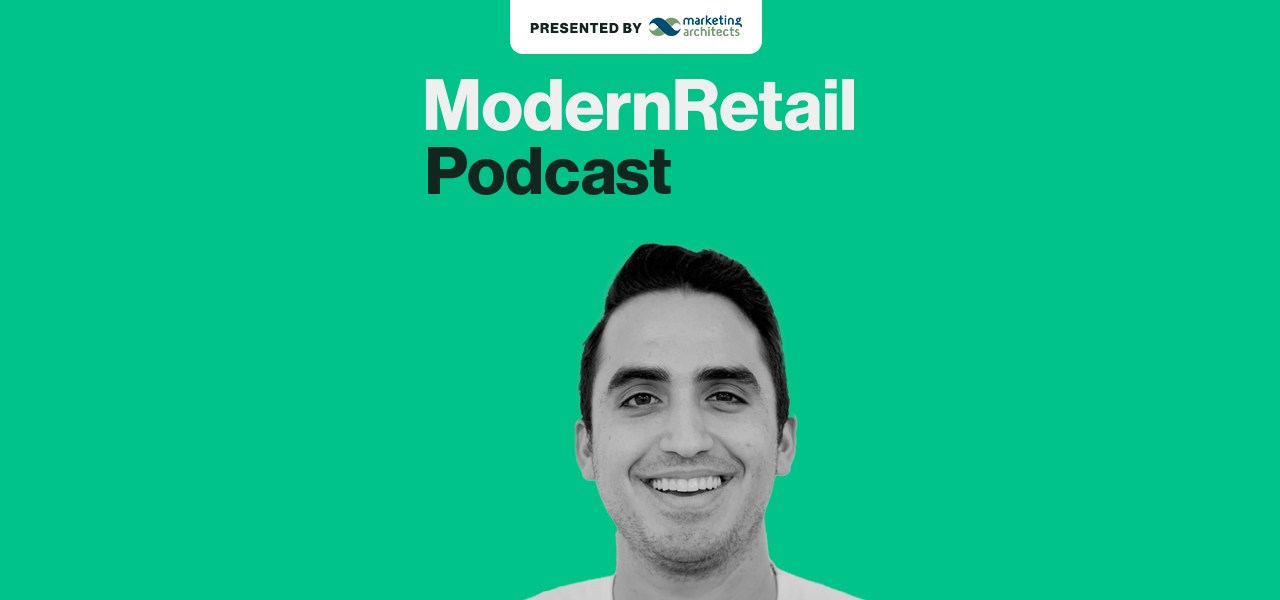‘Focus is a very hard thing’: Madhappy CEO Peiman Raf on thoughtfully growing the LA-centric apparel brand

Subscribe: Apple Podcasts • Spotify
Apparel brand Madhappy has built a culture brand around happiness.
It launched in 2017 with a small assortment of hoodies and hats. Madhappy’s style was meant to reflect the city it was born in: Los Angeles. “It was like a couple of products, very locally focused, in LA,” said co-founder and CEO Peiman Raf. “At a time where everyone was like retail’s dead, we’ll never open up retail stores, we did a pop-up two weeks after we launched and really grew the brand in much more of a grassroots way.”
Raf joined this week’s Modern Retail Podcast and spoke about Madhappy’s slow and steady growth, its approach to partnerships as well as its newly opened store.
Over the years, Madhappy has grown its assortment to include more apparel products like pants and shirts. It also has inked many partnerships, including a recent one with Uggs. The brand has launched over 20 pop-ups over the years, much of that thanks to a $1.8 million investment it received from LVMH in 2019.
It also helped that early on, Madhappy had some high-profile brand reps. “We were super lucky that people wanted to represent the brand, both in terms of in our community, as well as like celebrities [like] LeBron James or Jay Z, you know, people that we grew up idolizing,” Raf said. “And I think we’ve been lucky to continue to see that support as we’ve continued to grow.”
Despite all the partnerships and pop-ups, Raf said a big learning for the brand has been to stay focused. “Not overextending is something [that’s] super important and something that we’re continuing to work on,” he said.
Ad position: web_incontent_pos1
Now, much of the focus is on the new 2,800-square-foot permanent location in LA. According to Raf, having physical stores around the world has helped grow the brand equity — but Madhappy is also trying to make sure that the spaces aren’t a money pit.
“So we’ve always taken a much more sort of long view, conservative view, and do things that not only build the brand but also generate enough revenue to make sense financially,” he said.
Here are a few highlights from the conversation, which have been lightly edited for clarity.
The anti-DTC launch model
“[Our approach] was sort of the opposite of what you would consider traditional direct-to-consumer, especially at that time, which would have been raising money before you launch, paying a company to do a brand book and guide and all this stuff for you and then come out with this huge bang and be running Instagram ads from day one. I think for us it was like a couple of products, very locally focused, in LA. At a time where everyone was like retail’s dead, we’ll never open up retail stores, we did a pop-up two weeks after we launched and really grew the brand in much more of a grassroots way.”
Keeping things focused
“Not overextending is something [that’s] super important. And something that we’re continuing to work on. I think focus is a very hard thing — especially for us, a company that’s only six and a half years old. And so we’ve tried to continue to get better at like, okay, what are the different areas that we want to definitely work with partners on? [The] right categories that we’re not necessarily producing? Or interesting moments of the year that we could do fun things? But also not trying to make it where we have so many obligations, so many things that we’re doing that it becomes too much — and each one isn’t getting the energy it needs.”
Ad position: web_incontent_pos2
Having a long view on physical stores
“We’re always trying to grow the brand in terms of awareness. But I think a piece of that is also in the sales and the profitability of the stores. So we’ve always taken a much more sort of long view, conservative view, and do things that not only build the brand but also generate enough revenue to make sense financially. And so for us, we’ve always approached it that way. And for the most part, we’ll always approach it that way.”

